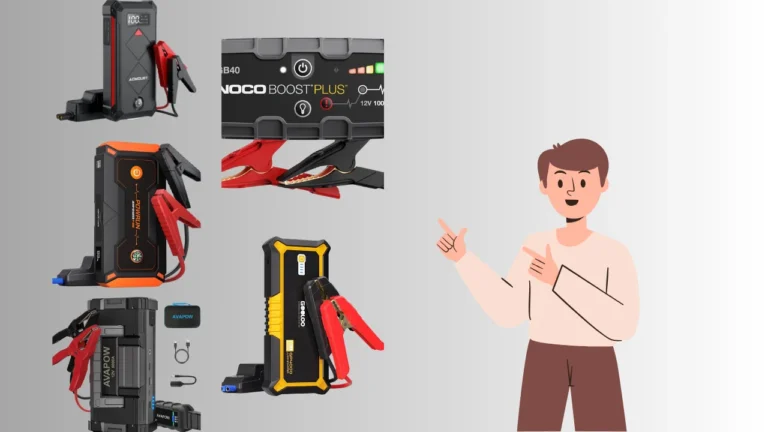We’ve all been there, wondering how long to leave cars connected when jump starting. The general rule is about 5-10 minutes before trying to start the dead car. With over 70% of battery issues happening unexpectedly, timing matters. Learn how to safely jump-start a car using another vehicle by following the steps in How to Jump Start a Car with Another Car.
Jump-starting isn’t just about patience; it’s about safety, too. Keeping cars connected for more than 30 minutes can risk overheating and damaging electronics. Monitor the cables and disconnect if they feel too hot.
Quick Look
Leave the cars connected for about 5-10 minutes, allowing the dead battery to gain enough charge. For larger vehicles or colder weather, extend the time to 10-15 minutes. After the jump start, keep the car running for 20-30 minutes to recharge the battery fully.
Does the type of vehicle affect the connection time?
Yes, the type of vehicle does affect the connection time when jump-starting. Larger vehicles like trucks and SUVs often have bigger batteries, which may require a longer connection time to transfer enough charge for a successful jump start.
While smaller cars typically need around 5-10 minutes of connection, larger vehicles might benefit from 10-15 minutes to ensure the battery receives sufficient power. Additionally, diesel engines, which are common in larger vehicles, usually have higher electrical demands, necessitating a longer charging period compared to standard gasoline engines.
Preparations for Jump Start
Before jump-starting, safety should be our top priority. Start by checking both batteries for any signs of damage. If the battery is leaking or bulging, don’t risk it—get help from a professional.
Positioning the Vehicles
Make sure to park the cars close, but keep at least 12 inches of space between them. This distance ensures that the jumper cables can reach comfortably. Keep the vehicles’ ignitions off while setting up.

Cable Connection Order
Connect the jumper cables in the right order to avoid sparks. First, attach the red cable to the positive terminal on the dead battery. Next, connect it to the positive terminal of the good battery.
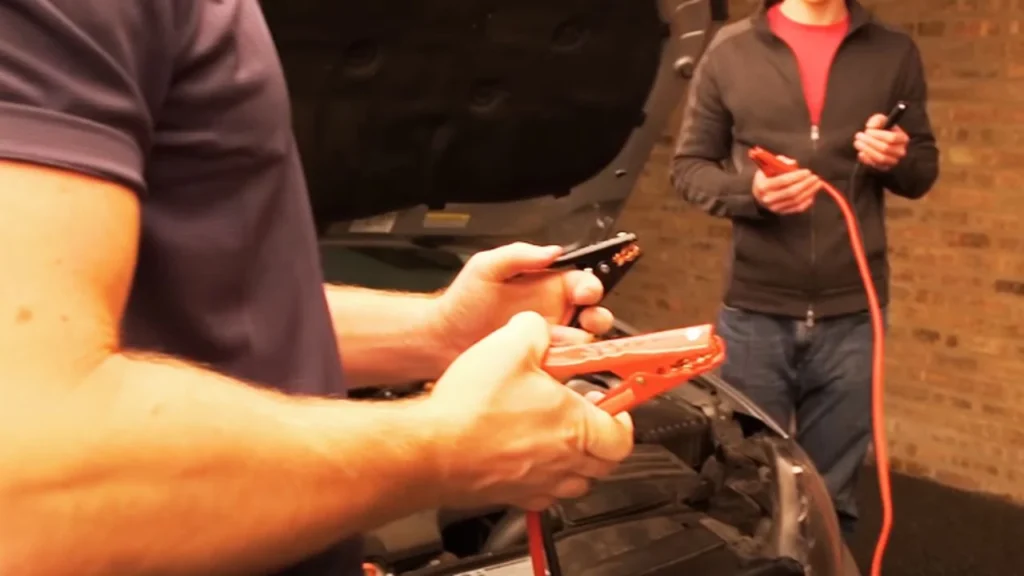
Grounding the Connection
Attach the black cable to the negative terminal of the working battery. For the other end, find an unpainted metal surface on the car with the dead battery. This helps ground the connection safely.
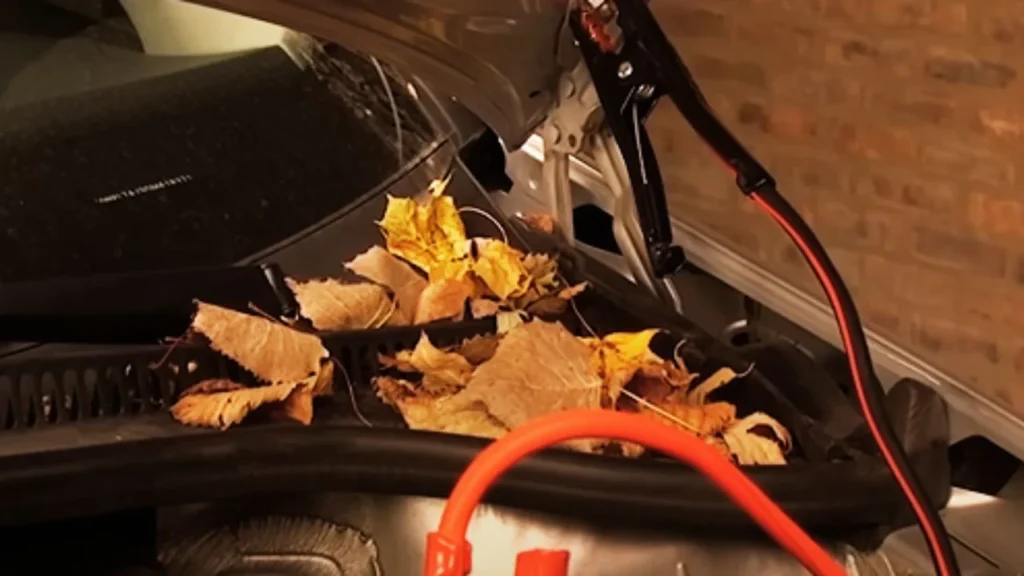
Keep a Safe Distance
Did you know that batteries can explode? It’s rare, but it does happen. Always keep a distance of at least three feet from the batteries when connecting cables to stay safe.
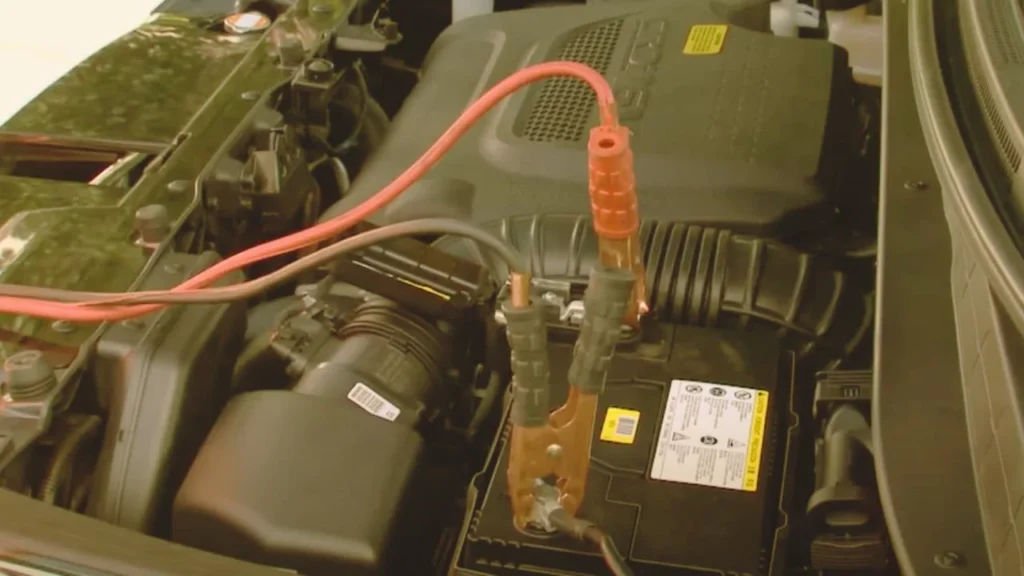
Starting the Working Car
When everything is connected, start the working car first and let it run for around three minutes. This step gives the dead battery a chance to gain some charge before attempting to start it.
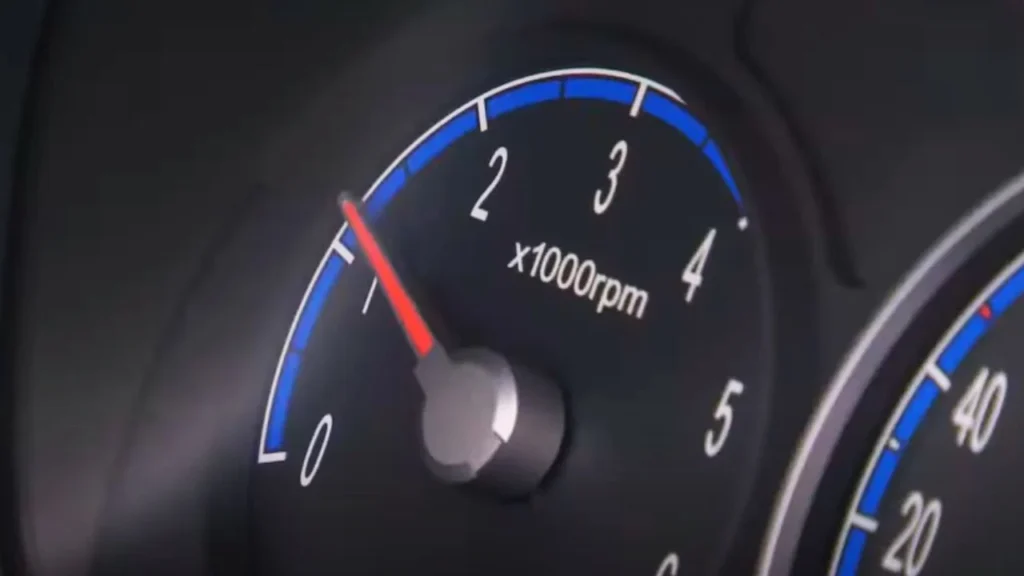
How Long to Leave Cars Connected When Jump Starting?
Recommended Connection Duration
When I’m jump-starting a car, I typically leave the cables connected for about 5-10 minutes. This allows the good battery to transfer enough charge to the dead one. In most cases, this duration is enough for the jump-start to be effective.
Handling a Heavily Drained Battery
Now, if the battery is severely drained, I might leave it connected for up to 15 minutes. Keeping an eye on the time is crucial—going beyond 20 minutes can risk overheating. Also, older car models are more sensitive, making it vital to disconnect in a timely manner.
Balancing Safety and Effectiveness
To minimize risks, I recommend setting a timer. For example, after charging for 10 minutes, try starting the car. If it doesn’t start, I’d give it another 5 minutes before trying again. This ensures a balance between safety and effectiveness.
Follow our comprehensive guide on How to Jump Start a Car with a Battery Pack to get your vehicle running quickly.
Factors Influencing Connection Time
Several factors can affect how long I need to leave cars connected when jump-starting. It’s not a one-size-fits-all process; things like battery condition, vehicle type, and even the weather come into play. Let’s break down each factor so you’ll know what to expect.
Battery Condition
When I jump-start a car, I first consider the battery’s state. If it’s completely drained, it might need 10-15 minutes to charge. On the other hand, if it’s just slightly low, 5-7 minutes can be enough to get it back up and running.
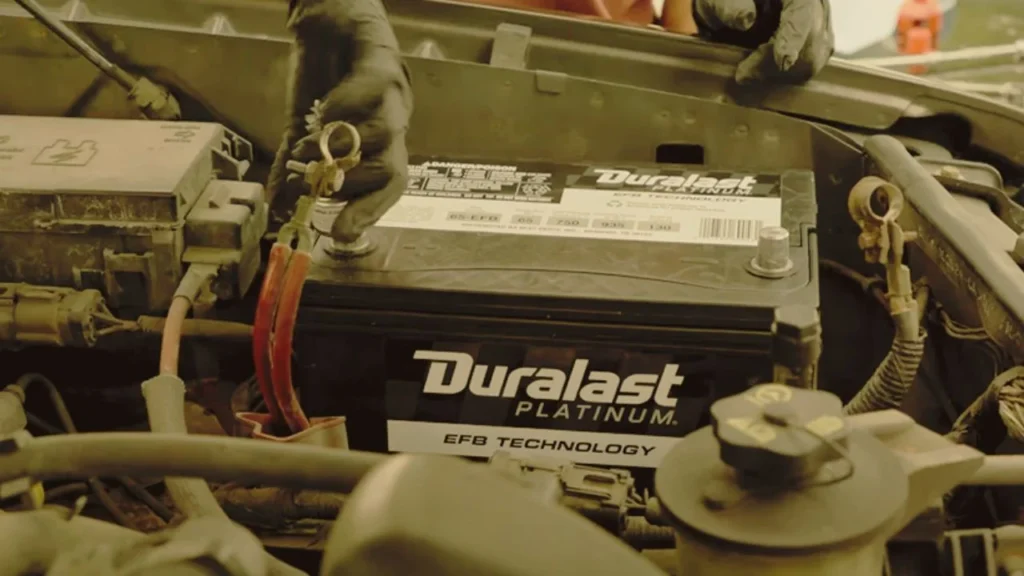
Vehicle Type
The type of vehicle matters too. For a compact car, I’ve found that charging can be quicker, often within 5-8 minutes. Larger vehicles like trucks or SUVs may need closer to 15 minutes since their batteries usually have double the capacity of smaller cars.
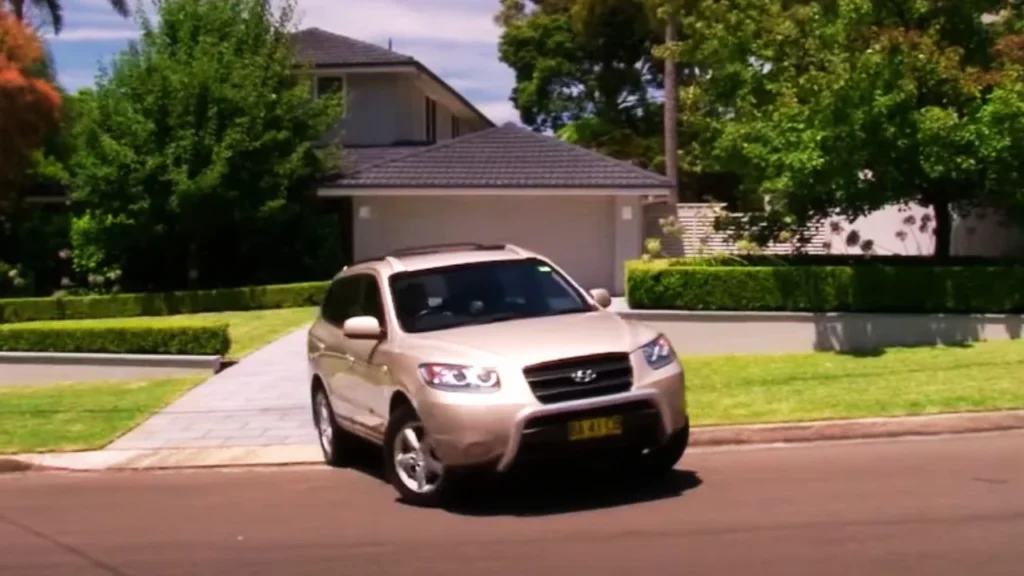
External Conditions
Weather plays a significant role. In colder temperatures, I’ve noticed it takes at least 20% longer to charge the battery, as the cold slows down chemical reactions inside. In warmer climates, this time can drop by a few minutes.
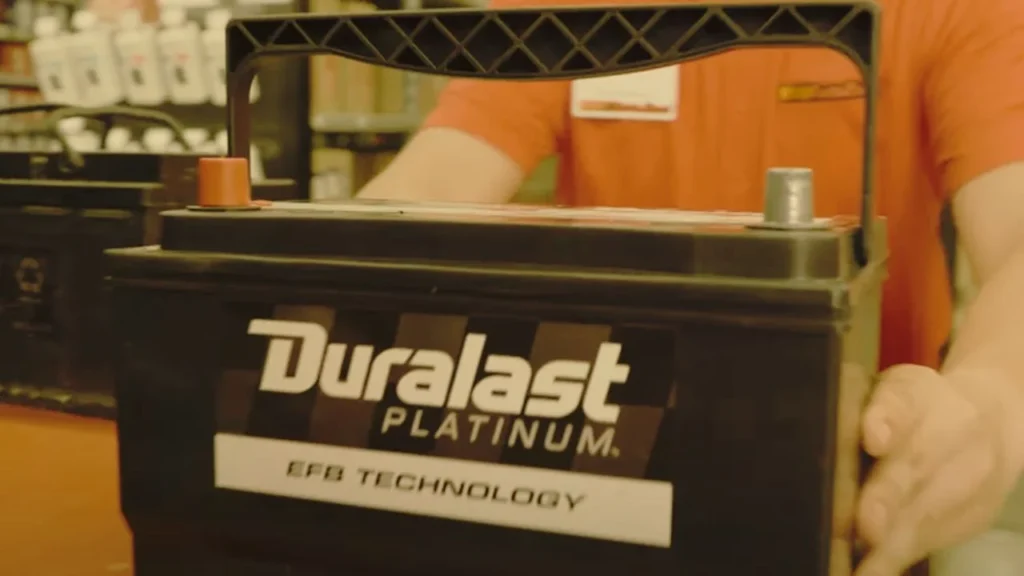
Testing the Dead Battery
Now it’s time to see if the battery has enough charge to start the engine. This step involves checking if the initial connection did the trick. Let’s walk through how to test and what to do if your car still doesn’t start.
Start the Engine
So, after giving the battery a bit of juice, it’s time to see if it’s ready to start. Usually, leaving it connected for 5-10 minutes is enough to get things moving. I know it feels like forever when you’re standing there, but hang tight—good things take time!
Keep the Car Running
Try turning the key and listen for the engine. If the car starts, awesome! Keep it running for at least 20-30 minutes to recharge. This helps the alternator finish the job and ensures your next start won’t be a struggle.
If It Doesn’t Start
But if your car doesn’t start after the first try, don’t worry just yet. Make sure the cable connections are secure and try again. If it’s still stubborn, let it charge for an extra 5 minutes before attempting another start. Just remember not to overdo it—trying more than three times can cause damage.
Disconnecting the Jumper Cables: Steps for a Safe Finish
Unhooking the jumper cables isn’t complicated, but you’ve got to do it right. Properly disconnecting prevents sparks and electrical issues. Let’s break down each step for a smooth and safe process.
Turning Off the Engines
Now, when it’s time to disconnect, don’t just rush into it. You’ve already gotten the car up and running, so let’s do this carefully. Start by shutting off both engines—this prevents any chance of an electrical mishap.
Disconnecting the Black (Negative) Cable
Next, remove the black (negative) cable from the car that needed the jump. Did you know it only takes a second to make a spark if the cables touch? So, be cautious when handling them.
Disconnecting the Red (Positive) Cable
Now, detach the black clamp from the booster vehicle. After that, it’s time for the red (positive) cable—remove it from the car that got the jump first. Finish by removing the red clamp from the other car.
Letting the Engine Run
Leaving the engine running for 15-30 minutes is crucial to recharge the battery. The alternator can give a proper charge in that timeframe, reducing the chance of needing another jump soon. If you have a voltmeter, the battery should ideally read 13.7-14.7 volts during charging.
Ensuring Safe Disconnection
Following these steps helps avoid sparks and ensures the cables don’t touch, which could damage the vehicle’s electronics. It’s a straightforward process, but getting it right makes a big difference in keeping things safe.
Alternatives to Traditional Jump-Starting
Jump-starting a car doesn’t always have to involve another vehicle. There are simpler, faster, and even safer methods available. Let me share some effective alternatives to traditional jump-starting that you can rely on.
Portable Jump Starters: A Game-Changer
I’ve found that having a portable jump starter can be a game-changer. These compact devices pack a punch, delivering up to 1,000 amps of power. That’s enough to jump-start most vehicles without needing another car around, which is pretty handy.
Faster Process with Portable Jump Starters
Using a portable jump starter typically takes just a couple of minutes. I’d say, on average, it cuts down the whole process by 50%. So, if traditional jump-starting takes around 10 minutes, this method can get you back on the road in about 5 minutes or less.
Roadside Assistance as a Backup
Roadside assistance is another great alternative when things get tricky. In the U.S., AAA claims to respond to over 30 million battery-related calls annually. Having a membership means you won’t be left stranded, especially if you’re not confident with cables
Safety Guide
Knowing how long to leave cars connected when jump starting is essential for a successful and safe jump start. It’s important to follow the right steps and take safety precautions to avoid potential damage. Here’s a quick guide to help you jump-start your car safely:
- Check Battery and Cables: Ensure the batteries aren’t damaged and cables are in good condition.
- Position Vehicles Properly: Park close without touching, and turn off both engines.
- Attach Cables Correctly: Connect positive (red) cables first, then negative (black) cables to a metal surface.
- Monitor Connection Time: Leave connected for 5-15 minutes, depending on vehicle size.
- Avoid Prolonged Connections: Extended connection times can risk electrical system damage.
- Safely Disconnect Cables: Remove cables in reverse order; avoid touching them together.
- Run the Car Post-Start: Keep it running for 20-30 minutes to recharge the battery.
Final Words
From my experience, knowing how long to leave cars connected when jump starting is crucial. I usually recommend around 5-10 minutes, depending on battery condition and weather. If it’s below freezing, I’d extend it to 15 minutes for better results.
Remember, once your car starts, keep it running for at least 20-30 minutes to recharge the battery fully. Following these steps can save you time and prevent potential damage.
Ali is a tech enthusiast and automotive aficionado, passionate about sharing insights on the latest innovations and industry trends.

